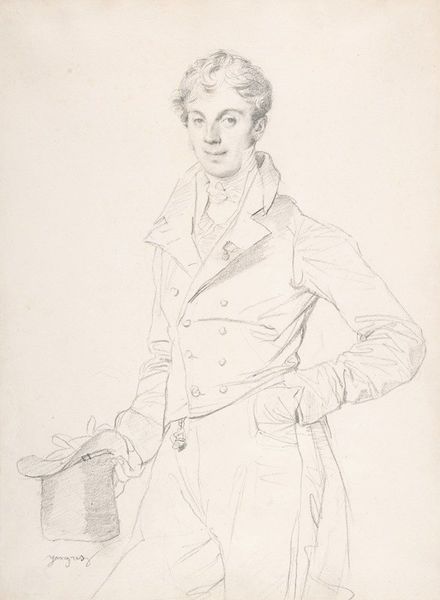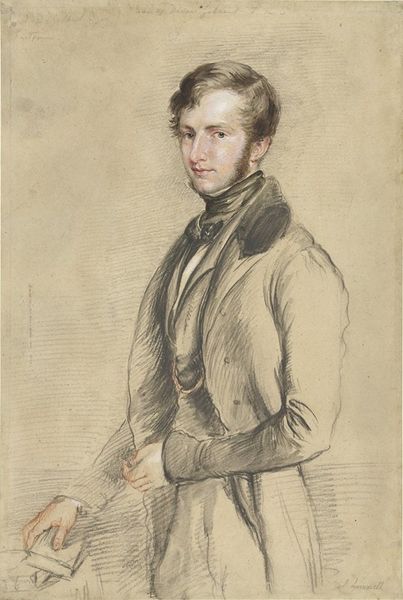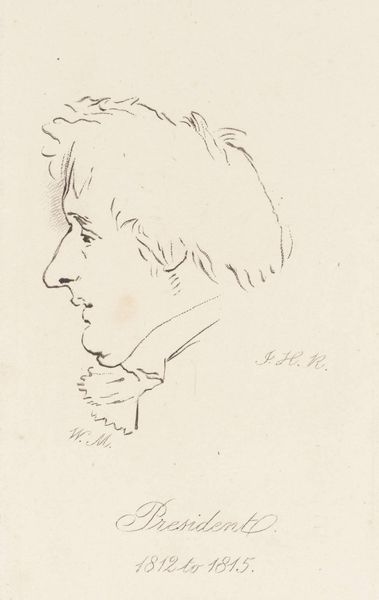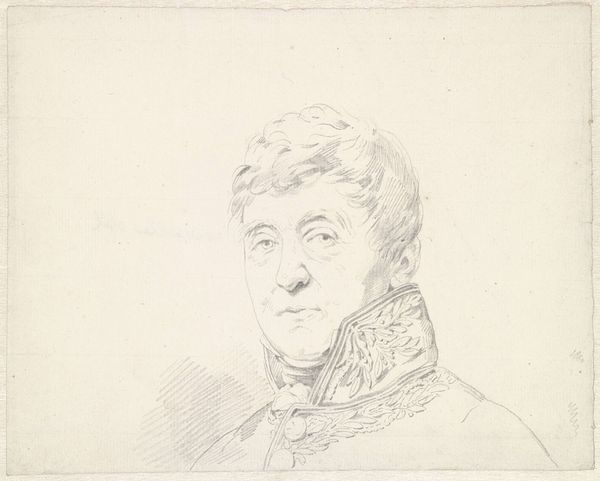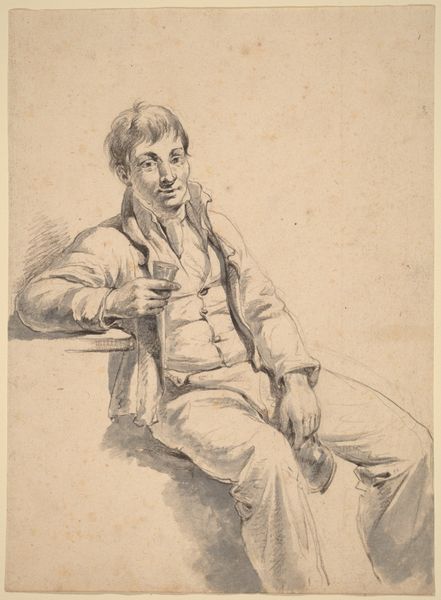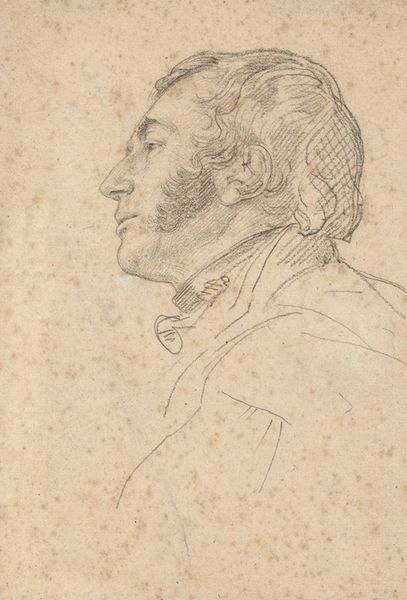
drawing, pencil
#
portrait
#
pencil drawn
#
drawing
#
neoclacissism
#
facial expression drawing
#
light pencil work
#
pencil sketch
#
charcoal drawing
#
figuration
#
portrait reference
#
pencil drawing
#
pencil
#
yellow element
#
portrait drawing
#
pencil work
Copyright: Public Domain: Artvee
Jean Auguste Dominique Ingres made this drawing of a man in 1814. We can see the subject's social standing through his attire, a double-breasted coat. Ingres was a key figure in the French Academy, which promoted Neoclassicism and opposed Romanticism. It's interesting to consider this drawing against that backdrop. Ingres's precise lines and idealized forms reflect Neoclassical principles, rooted in order and reason. But the man's slightly disheveled hair hints at Romanticism's emphasis on emotion. Ingres’ portraits often flattened features, and heightened expression, with sitters who appear aware of being looked at. How might this affect their social standing? What does this imply about the role of the artist? To fully understand this work, one could examine the French Academy's records or delve into biographies of Ingres and his contemporaries. Only then can we fully contextualize the artist's relationship to institutional structures.
Comments
No comments
Be the first to comment and join the conversation on the ultimate creative platform.




